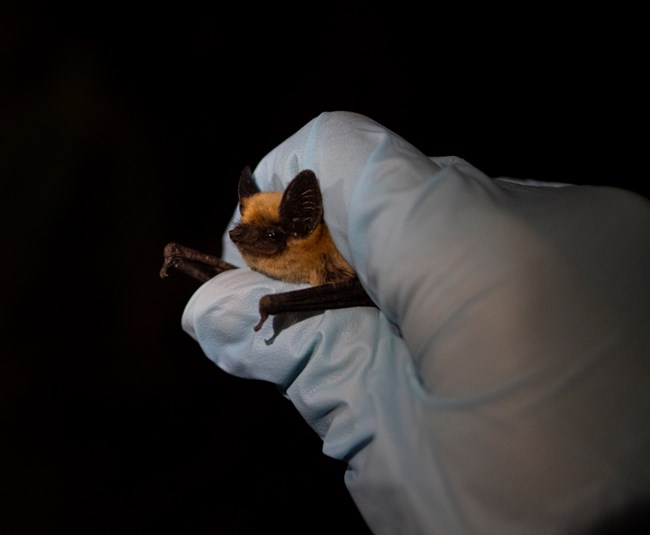
NPS Photo/B.T Hamilton Bats are unique as mammals because their front limbs have evolved into wings, allowing them to fly rather than simply glide. Bats are incredibly diverse in their size, shapes, and feeding habits. The monument is home to bats that feed on nectar, as well as bats that feed on insects, both with special adaptations to find their food. Bats in the monuments emit high frequency noises that bounce off an object and return to the bat in a way that it can recognize its surroundings through a process called echolocation. Learn everything there is to know about bats and White-nose Syndrome on the NPS Bats page or learn about bat research at Organ Pipe Cactus! 
NPS Photo Lesser long-nosed bat (Leptonycteris yerbabuena)The lesser long-nosed bat is a celebrity in the park. Every year, with the blooming of tall cacti, the lesser long-nosed bat follows the blooms northward on what is known as the “nectar trail”. The bat hovers over the flower, dips its face into the bloom, and using its tongue that is as long as its body, laps up the sweet nectar. While in such close contact with flowers, the bat will often be coated in pollen, which it transfers to other flowers as it feeds. This bat has a special relationship with the saguaro cactus in the monument, acting as the cacti’s only true night-time pollinator. The lesser long-nosed bat is important bat to the Sonoran Desert ecosystem is a subject of research in the monument. Identify this BatLesser long-nosed bats are light brown to dull gray, have a long face, and small ears. The nose has a small triangle-shaped structure called a ”nose-leaf” that helps the bat echolocate. This bat has long wings, allowing it to fly efficiently over long distances. The lesser long-nosed bat is only active at night in the monument for a short period of time as the taller cacti and succulents bloom in the park in summer. 
NPS Photo Canyon bat (Parastrellus hesperus)The canyon bat is the smallest bat in the United States. Their short wings allow them to quickly dip and dodge through the air in search of insects. These bats use echolocation to find their next meal, filling the evening air with nearly silent chirps. Although canyon bats emerge and hunt at the same time, they rarely roost together, and are often found alone in rocky crevices. Identify this BatThis small bat has a small, round body with relatively large ears. The flaxen colored fur is fluffy and covers the bat’s body except for wings, feet, and a small face mask of bare skin. This bat is often the first bat out, and the last to leave the skies in the morning, so keep an eye out during the light hours of dusk and dawn. |
Last updated: October 5, 2023
